Sushi first became popular in the western world in the 1960s. Business partners Noritoshi Kanai and Harry Wolff opened the first sushi restaurant in the United States – Kawafuku – in Los Angeles, California in 1966. A year later, in 1967, the first sushi restaurant in the UK – Hiroko – was founded by Akiko Kuzusaka.
While Kanai, Wolff, and Kuzusaka used traditional ingredients and techniques to present an authentic taste of Japanese cuisine to their customers, all things change over time. Cultural differences, the availability of certain ingredients, and the preferences of the local clientele all played a part in sushi’s evolution outside of Japan. While the fundamentals remain the same, there are several distinctions to be made between Japanese sushi and Western sushi.
These are some of the main ones you might discover:
Ingredients
Japanese sushi is famous for its simplicity – usually comprising nothing but rice, fish, and nori, along with some seasoning. Western sushi is more complicated, adding high-fat ingredients, such as tempura, mayonnaise, avocado, and cream cheese – few of which make an appearance in traditional Japanese sushi.
Another difference is the type of rice used in both varieties. Japanese sushi uses japonica strains of rice such as koshihikari and emi no kizuna, while some western sushi chefs use Californian calrose or Italian originaro rice. some, more health-conscious chefs replace this with brown rice and sometimes even quinoa.
The biggest distinction is that Western sushi tends to lean towards bold colours and strong flavours, rather than the subtler shades and flavour notes of its Japanese counterpart where the simple tastes of the fish and the rice are at the forefront enhanced by delicate seasonings like akasu and dashi.
Style
A noticeable difference between Japanese and Western sushi is how they are put together. A Japanese nori roll is made with the nori on the outside, tightly wrapped around the rice and other ingredients. Western sushi layers the rice first, followed by the nori and then the filling. When rolled, this leaves the rice on the outside. This was done to cater to largely American aesthetics, as diners did not like the texture of nori on the outside of their rolls. Having the rice on the outside also allowed Western sushi chefs to add extra ingredients to the outside.
Etiquette
In Japan, sushi is treated as an art form, with the sushi chef taking the role of artist. You won’t find wasabi served on the side in its own little dish in a traditional Japanese restaurant, as the chef has already applied the perfect amount for the meal between the rice and the fish. While Western sushi diners will struggle with chopsticks, in Japanese restaurants these are only used for sashimi, with patrons using their fingers for the other dishes.
Whether you prefer Japanese sushi or Western sushi – or if you like both of them equally, as many of us do – the key to a great dish is fantastic ingredients. Visit our online store to discover the best sushi products available in the UK.
Shop Products






